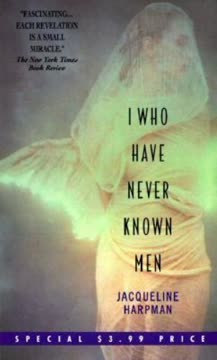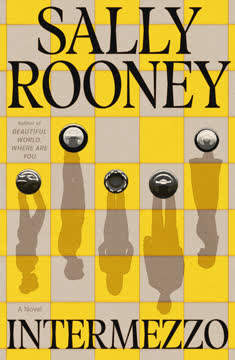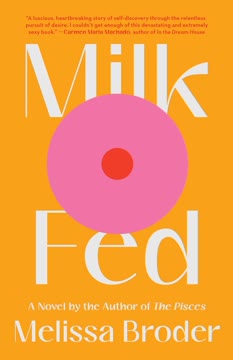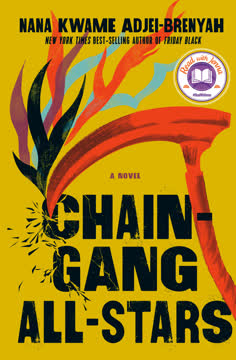Plot Summary
After the End, Beginnings
In the aftermath of a global pandemic called Shen Fever, a small group of survivors bands together, fleeing New York for the supposed safety of the Midwest. Their skills are ill-suited for survival, and they rely on Google and the remnants of civilization to get by. The group is led by Bob, a man with a penchant for control and ritual, who promises sanctuary in a mysterious Facility near Chicago. The narrator, Candace Chen, is the last to join, haunted by the city she left behind and the memories of her parents and boyfriend. The group's early days are marked by uncertainty, shame, and a desperate need to find purpose in a world that no longer makes sense.
Nostalgia and New York Routines
Before the collapse, Candace's life in New York is defined by routine and repetition. She works in book production, specifically Bibles, and spends her free time wandering the city, taking photographs for her anonymous blog, NY Ghost. Her relationship with Jonathan, a drifting writer, is strained by the city's pressures and their diverging ambitions. The city itself is both a source of comfort and alienation, its routines masking deeper anxieties about belonging, ambition, and the meaning of work. Nostalgia permeates Candace's days, as she recalls her immigrant childhood and her parents' sacrifices, even as she feels increasingly disconnected from her present.
The Fever Spreads
News of Shen Fever, a mysterious fungal infection originating in China, begins as background noise but soon becomes an inescapable reality. The fever's symptoms—memory lapses, repetitive behavior, eventual death—mirror the routines and mindlessness of modern life. As the infection spreads, Candace's office distributes masks and gloves, but the measures feel performative. The city's infrastructure falters, and the boundaries between the fevered and the healthy blur. The pandemic exposes the fragility of global supply chains, the exploitation of overseas labor, and the emptiness of consumer culture, as Candace's work in Bible production becomes a microcosm of these larger forces.
Office Life and Disconnection
Candace's office life is a study in alienation. Her job is repetitive, her relationships with coworkers superficial, and her sense of self eroded by the demands of productivity. The fever's spread heightens anxieties, but the routines persist—meetings, emails, production schedules. The office becomes a last bastion of normalcy, even as the world outside collapses. Candace's attempts to transfer departments, her longing to be an "Art Girl," and her interactions with management reveal the hollowness of corporate advancement. The office's eventual closure is both a liberation and a loss, forcing Candace to confront the emptiness beneath her routines.
Jonathan's Departure
Jonathan's decision to leave New York is both a personal and generational crisis. Disillusioned with the city's cost and culture, he invites Candace to join him in starting over elsewhere. Their conversations expose the limits of love, the weight of economic precarity, and the difficulty of imagining a different life. Candace's ambivalence—her attachment to routine, her fear of change, her sense of duty—prevents her from leaving. Jonathan's departure is a rupture, leaving Candace more isolated and adrift, her pregnancy a secret burden she carries into the apocalypse.
The Collapse of Normalcy
As the fever decimates the population, New York empties out. The city's landmarks become haunted, its routines impossible to maintain. Candace documents the decline on her blog, NY Ghost, becoming both witness and ghost herself. The collapse is gradual, marked by the disappearance of coworkers, the closure of stores, and the breakdown of public services. The boundaries between the living and the fevered blur, as survivors cling to rituals that no longer have meaning. Candace's sense of self dissolves, her identity reduced to the repetition of daily tasks in a world that no longer recognizes her.
Survival Group Forms
Candace is absorbed into Bob's group of survivors, each with their own traumas and coping mechanisms. The group is bound by rituals—pre-stalk chants, post-stalk rites, the marking of time through meals and chores. Bob's leadership is both comforting and oppressive, his vision of the Facility a promise of order in chaos. The group's dynamics are fraught with tension, as old identities clash with new realities. Candace's pregnancy becomes both a secret and a symbol, her body a site of hope and control. The group's journey is marked by loss, violence, and the constant threat of becoming fevered.
Stalking the Ruins
The group survives by "stalking" abandoned homes and stores, gathering supplies and confronting the fevered. These expeditions are both practical and symbolic, reenacting the routines of the past even as they destroy them. The fevered are trapped in loops of memory, their actions a grotesque mirror of the survivors' own habits. Candace is forced to participate in violence, her complicity deepening her sense of alienation. The act of stalking becomes a meditation on consumption, nostalgia, and the impossibility of escape from the past. Each house is a mausoleum of lost lives, each object a relic of meaninglessness.
Memory, Family, and Migration
Interwoven with the present are Candace's memories of her family's migration from China to Utah. Her parents' struggles, ambitions, and disappointments shape her understanding of work, belonging, and sacrifice. The rituals of prayer, cooking, and storytelling are both sources of comfort and sites of conflict. Candace's relationship with her mother is fraught with misunderstanding and love, their bond tested by the pressures of assimilation and loss. The family's history is a story of second chances, of the hope and pain of starting over, and of the ways memory both sustains and imprisons.
Factories, Labor, and Globalization
Candace's work in Bible production takes her to factories in China, where she confronts the realities of global labor. The factories are sites of exploitation, illness, and displacement, their workers invisible to the consumers they serve. The fever's origins in Shenzhen are linked to the conditions of production, the spread of spores a metaphor for the interconnectedness—and vulnerability—of the global economy. Candace's interactions with factory managers and workers reveal the limits of empathy and the complicity of all who benefit from cheap goods. The collapse of supply chains mirrors the collapse of meaning in her own life.
Rituals of the Past
Throughout the narrative, rituals—both personal and collective—structure the survivors' days. From office routines to group prayers, from skincare regimens to stalking chants, these repetitions are both a defense against chaos and a trap. The fevered are the ultimate expression of routine gone awry, their lives reduced to endless loops of meaningless action. Candace's own routines—walking, photographing, working—become increasingly hollow, even as she clings to them for survival. The tension between the need for structure and the desire for freedom animates her journey, as she seeks a way to break the cycle without losing herself.
The Facility: Suburban Refuge
The group finally arrives at the Facility, revealed to be an abandoned suburban mall. Bob's vision of safety and order is realized in the division of stores into living quarters, communal spaces, and stockpiles. The mall is both a sanctuary and a tomb, its abundance a reminder of the excesses and emptiness of consumer culture. Candace is confined, her pregnancy used as justification for control. The group's dynamics deteriorate, as loss, suspicion, and the weight of the past erode trust. The mall becomes a microcosm of the world they left behind—safe, sterile, and suffocating.
Nostalgia's Trap
Nostalgia is both a comfort and a curse for Candace and the other survivors. The fever itself is a disease of memory, trapping its victims in endless reenactments of the past. The survivors are not immune; their rituals, stories, and longings keep them tethered to a world that no longer exists. Attempts to revisit childhood homes or reclaim lost routines end in tragedy, as with Ashley's fevering. Candace's own memories—of family, love, and work—threaten to overwhelm her, even as they provide the only sense of continuity. The struggle to move forward is a struggle against the gravitational pull of nostalgia.
The Loop of Routine
Life in the Facility is defined by routine—meals, chores, meetings, surveillance. Candace's confinement is both physical and psychological, her days blending into one another. The group's rituals become increasingly hollow, their purpose lost as members die or disappear. Candace's pregnancy is both a hope and a burden, her body a site of control and resistance. The question of what it means to be alive—versus merely surviving—haunts her, as she contemplates escape. The loop of routine is both a comfort and a prison, its breaking both terrifying and necessary.
Loss, Grief, and Ghosts
Candace is haunted by the ghosts of her parents, her lost friends, and her former self. Grief is a constant companion, manifesting in dreams, memories, and hallucinations. The dead are never far, their stories replaying in her mind. The act of burning offerings, of telling stories, of praying, are all attempts to bridge the gap between past and present, between the living and the dead. The fevered are literal ghosts, trapped in their own memories, but Candace is no less haunted. Her journey is one of mourning, of learning to let go without forgetting.
The End of Work
The collapse of the office is both a personal and societal crisis for Candace. Work has been her anchor, her means of belonging and self-definition. Its loss is both a liberation and a void, forcing her to confront the emptiness beneath her routines. The end of work is also the end of a certain kind of self—the productive, useful, assimilated self her parents hoped for. Candace's attempts to continue working, to document the city, to fulfill her contract, are both acts of resistance and denial. The question of what remains when work ends is central to her journey.
Escape from the Facility
The death of her friends, the fevering of Bob, and the suffocating routines of the Facility push Candace to the brink. Her pregnancy becomes both a reason to stay and a reason to flee. With the help of her mother's imagined voice, she seizes an opportunity to escape, stealing a car and driving toward Chicago. The act of escape is both a physical and psychological break, a refusal to be defined by the past or by others' expectations. The risks are immense, but the alternative is a living death. Candace chooses uncertainty over stasis, movement over repetition.
Toward Chicago, Toward Future
Candace's journey ends on the road to Chicago, the city of her father's dreams and her own childhood memories. The drive is both literal and symbolic—a movement toward the unknown, a refusal to be trapped by nostalgia or routine. The city is both familiar and strange, a place of possibility and loss. Candace's hopes for her unborn child, Luna, are bound up in the desire for rootedness, for a life not defined by repetition or survival alone. The future is uncertain, but it is open—a space for new stories, new routines, and new meanings.
Characters
Candace Chen
Candace is the novel's protagonist and narrator, a Chinese-American woman whose life is shaped by migration, loss, and routine. Her work in Bible production is both a source of pride and alienation, connecting her to global systems of labor and exploitation. Candace is introspective, observant, and often passive, her actions shaped by the expectations of others—her parents, her boyfriend, her boss, her survival group. She is haunted by memories of her family, her failed relationship with Jonathan, and the routines that once gave her life meaning. Her pregnancy becomes a symbol of hope and vulnerability, motivating her eventual escape from the Facility. Candace's journey is one of self-discovery, as she learns to assert her own desires and break free from the cycles of nostalgia and repetition.
Bob
Bob is the self-appointed leader of the survivor group, a former IT worker whose need for order and ritual masks deep insecurities. He is both comforting and authoritarian, using rituals, rules, and religious language to maintain control. Bob's vision of the Facility as a utopian refuge is both sincere and delusional, his leadership increasingly oppressive as the group's cohesion unravels. He is haunted by his own past, his failed relationships, and his sense of inadequacy. Bob's eventual fevering is both a literal and symbolic collapse, exposing the fragility of authority and the dangers of nostalgia.
Jonathan
Jonathan is Candace's boyfriend, a writer who resists the constraints of conventional work and dreams of escape. His disillusionment with New York and the pressures of adulthood mirror Candace's own anxieties, but his solutions—leaving, starting over, rejecting routine—are ultimately unsatisfying. Jonathan's relationship with Candace is marked by love, misunderstanding, and the inability to bridge their differences. His departure is a catalyst for Candace's isolation and self-examination, his absence a constant presence in her thoughts. Jonathan embodies the tension between freedom and responsibility, idealism and pragmatism.
Ashley
Ashley is the youngest member of the survivor group, a former fashion student from Ohio. She is defined by her longing for home, her sweetness, and her vulnerability. Ashley's attempt to revisit her childhood home leads to her fevering, a tragic illustration of the dangers of nostalgia and the impossibility of returning to the past. Her fate haunts the group, serving as a warning and a source of grief.
Janelle
Janelle is one of Candace's closest friends in the group, a steady and supportive presence. She is practical, resourceful, and protective, especially of Candace and Ashley. Janelle's loyalty ultimately leads to her death, as she tries to protect Ashley from the group's violence. Her loss is deeply felt, underscoring the costs of survival and the fragility of community.
Evan
Evan is a member of the group who copes with the apocalypse through humor, drugs, and detachment. He is both a source of comic relief and a tragic figure, his struggles with depression and addiction culminating in his suicide. Evan's relationship with Candace is complex—marked by camaraderie, guilt, and mutual dependence. His death is a turning point, forcing Candace to confront the limits of routine and the necessity of escape.
Rachel
Rachel is a former publicity worker who becomes Candace's main point of contact during her confinement in the Facility. She is pragmatic, observant, and increasingly complicit in the group's rituals and rules. Rachel's shifting loyalties reflect the pressures of survival and the difficulty of maintaining integrity in a collapsing world. Her small acts of kindness toward Candace are both a comfort and a reminder of the limits of solidarity.
Genevieve
Genevieve is responsible for many of the group's rituals and domestic arrangements, bringing a sense of order and beauty to their routines. She is both nurturing and complicit, her creativity channeled into maintaining the illusion of normalcy. Genevieve's adherence to ritual reflects the group's broader struggle to find meaning in repetition.
Michael Reitman
Michael is Candace's boss at Spectra, a figure of authority and paternalism. He embodies the values of corporate America—productivity, order, and the illusion of meritocracy. Michael's interactions with Candace reveal the limits of empathy and the ways in which institutions fail their workers. His own family's fate is a reminder of the universality of loss.
Candace's Mother
Candace's mother is a central figure in her memories and dreams, embodying the complexities of immigrant motherhood. She is both nurturing and critical, her expectations shaping Candace's sense of self and duty. Her rituals—prayer, cooking, storytelling—are sources of comfort and conflict, her voice a guide and a burden. In death, she becomes a ghostly presence, urging Candace to survive and to break free from the cycles of the past.
Plot Devices
Dual Timelines and Nonlinear Narrative
The novel employs a nonlinear structure, weaving together Candace's present journey with flashbacks to her life before the apocalypse and her family's immigrant history. This dual timeline creates a sense of dislocation, mirroring the characters' psychological states and the collapse of linear progress. The past is never truly past; it intrudes on the present through memory, ritual, and repetition. This structure allows for deep character development and thematic resonance, as the cycles of routine, nostalgia, and trauma are explored across generations.
Routine and Repetition
The motif of routine—whether in office work, group rituals, or the actions of the fevered—serves as both a comfort and a curse. Repetition is a means of survival, a way to impose order on chaos, but it also traps characters in cycles of meaninglessness. The fever itself is a literalization of this theme, reducing its victims to endless loops of memory and action. The narrative structure mirrors this, with scenes and motifs recurring in different contexts, highlighting the difficulty of breaking free from the past.
Symbolism of Objects and Spaces
The novel is rich in symbolic objects—Bibles, skincare products, photographs, keys, food—that carry layers of meaning. These objects are repositories of memory, desire, and loss, connecting characters to their pasts and to each other. Spaces—offices, malls, homes, factories—are similarly charged, serving as both sanctuaries and prisons. The mall, in particular, is a symbol of consumer culture's emptiness and the illusion of safety.
Foreshadowing and Irony
The narrative is laced with foreshadowing, as early scenes of routine and disconnection hint at the coming collapse. Irony pervades the story, as characters' attempts to find meaning or escape are often thwarted by the very routines they cling to. The survivors' rituals, meant to ensure safety, become sources of danger. The search for utopia in the Facility leads to new forms of confinement. The ending subverts the expectation of resolution, offering instead the possibility of new beginnings.
Analysis
Ling Ma's novel uses the framework of a post-apocalyptic pandemic to explore the deeper malaise of late capitalism, immigration, and modern work. The fever that traps its victims in endless loops is both a literal disease and a metaphor for the mindless repetition of daily life, the ways in which routine can both sustain and destroy. Through Candace's journey—from the routines of office life to the rituals of survival, from the ghosts of her family to the emptiness of the Facility—Ma interrogates the costs of nostalgia, the dangers of stasis, and the possibility of renewal. The novel is deeply attuned to the immigrant experience, the longing for belonging, and the weight of generational sacrifice. Its critique of consumer culture, global labor, and the illusion of progress is both subtle and devastating. Ultimately, Severance asks what it means to be alive—not just to survive, but to break free from the cycles of the past and to imagine a future, however uncertain, that is truly one's own.
Last updated:
Review Summary
Severance is a post-apocalyptic novel that blends satire, millennial culture, and anti-capitalist themes. Readers praised its unique take on the pandemic genre, exploring themes of identity, immigration, and consumerism. The protagonist, Candace Chen, navigates a world ravaged by Shen Fever while reflecting on her past in New York City. While some found the narrative disjointed and characters underdeveloped, many appreciated the book's commentary on modern life and work culture. The novel's eerie similarities to the COVID-19 pandemic added to its impact for many readers.
Similar Books
Download PDF
Download EPUB
.epub digital book format is ideal for reading ebooks on phones, tablets, and e-readers.















